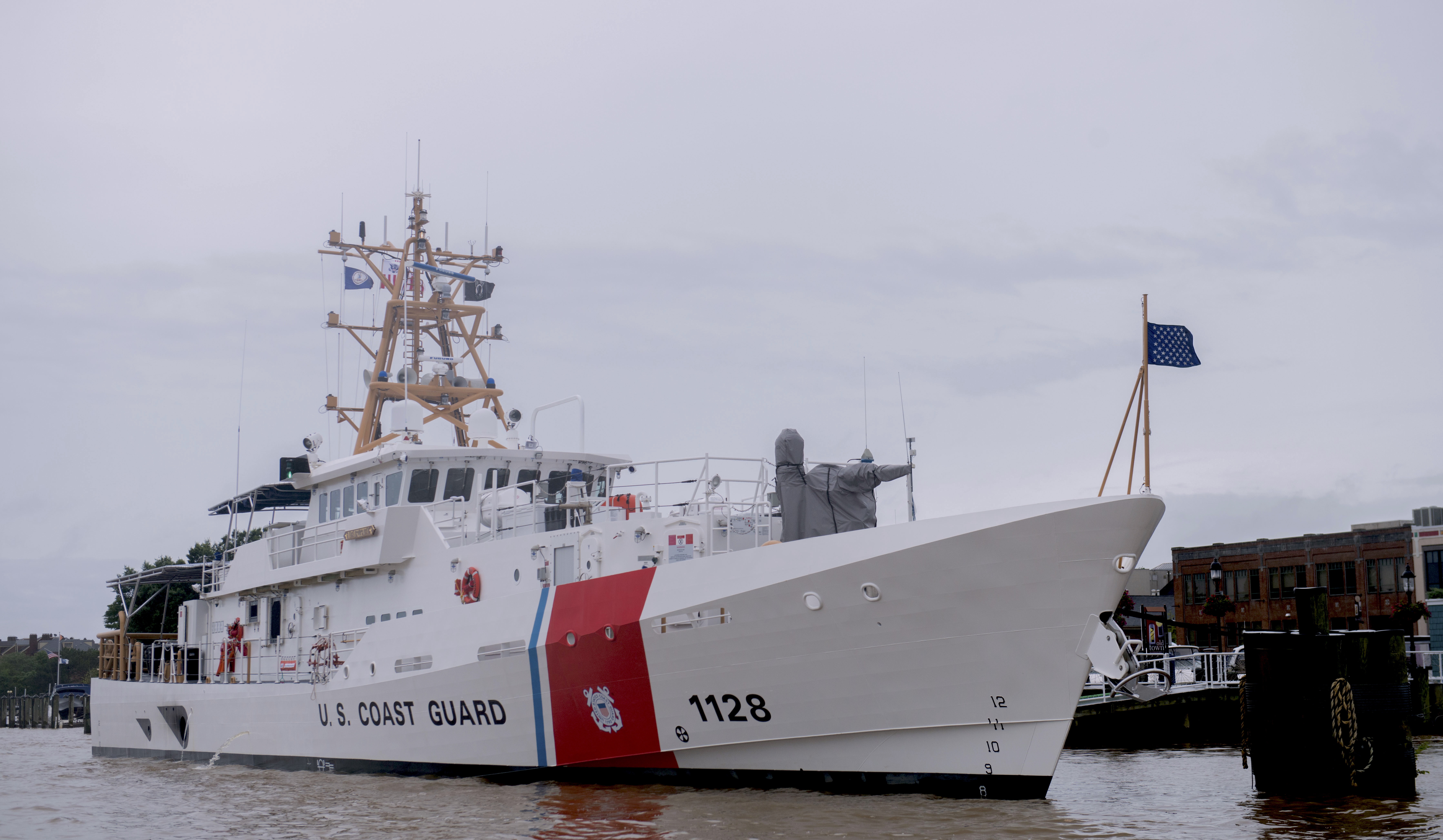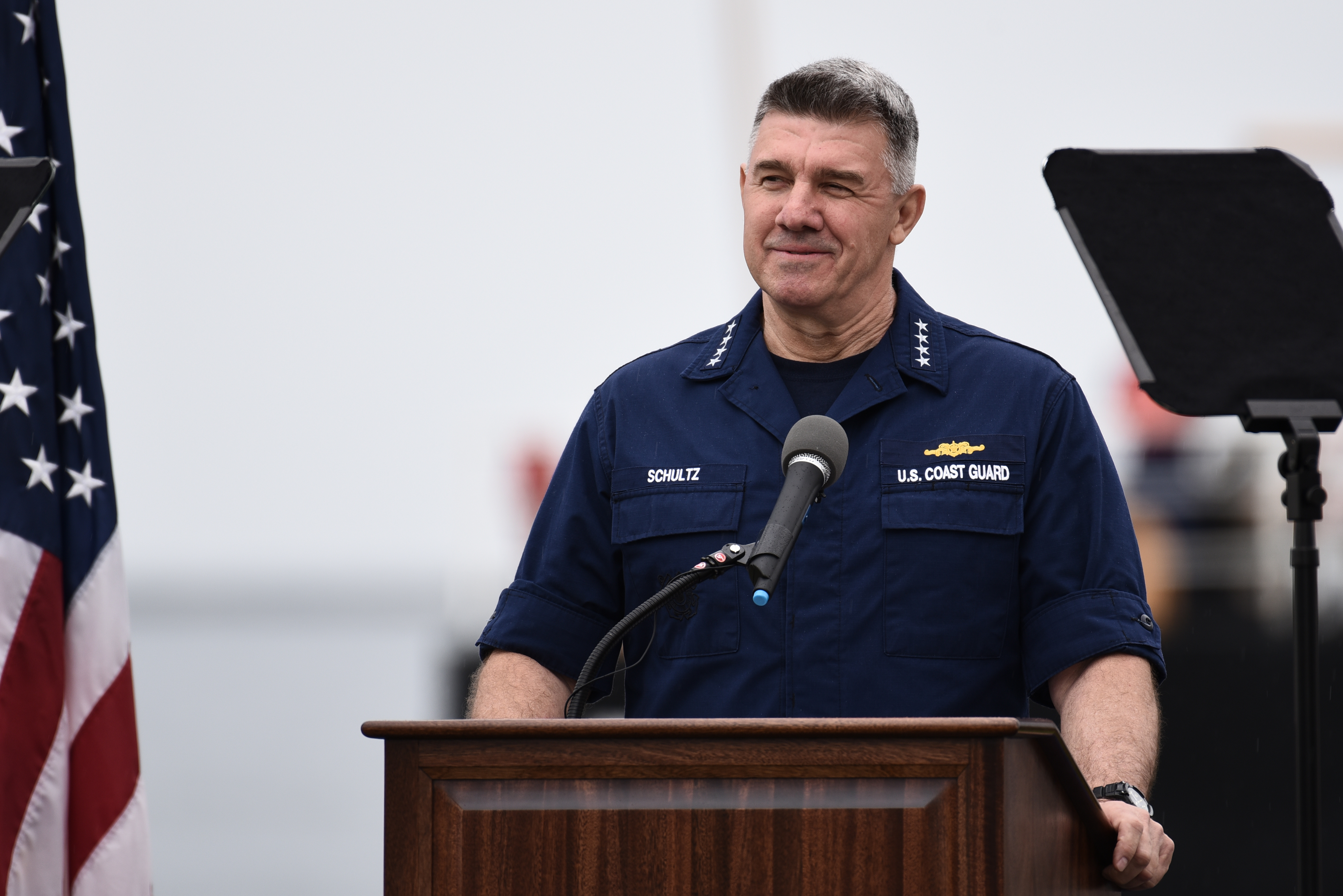
CAPITOL HILL – Lawmakers sounded skeptical that the Coast Guard’s Fiscal Year 2020 budget request is enough to cover the cost of current operations and invest in future technology and equipment needs.
For FY 2019, the Coast Guard received $10.3 billion in discretionary funding, including money to recapitalize air and marine assets, Rep. Lucille Roybal-Allard (D-Calif.), said during a House Appropriations subcommittee hearing on homeland security. The FY 2020 request only allows for $9.3 billion in discretionary funding.
“Unfortunately, the Fiscal Year 2020 request for Coast Guard funding is less promising,” Roybal-Allard, the subcommittee chair said. “It proposes an overall reduction to the Coast Guard budget of over $700 million, including a reduction of more than $1 billion to the procurement account.”
Adm. Karl Schultz, commandant of the Coast Guard said the underfunded service was forced to make tough choices during budget deliberations.

The Coast Guard’s new icebreaker, the polar security cutter is an example of the trade offs — the program is funded to only a modest $35 million funding request in FY 2020. Schultz said the request would continue to the program while it awards a contract and manages the work fort the first hull funded by the FY 2019 budget. A larger request is anticipated for FY 2021 and the service plans to award a contract for the second a planned six polar security cutters.
“Unlike the other armed services, Coast Guard funding is categorized as non-discretionary, or non-defense discretionary, which means we are excluded from the effort to rebuild our military and continue to find ourselves on the outside looking in when it comes to material operations to support plus-ups,” Schultz said.
Other programs are needed, but tight budgets mean not everything makes the cut, Schultz said. In many cases, Coast Guard leadership puts the fates of such programs in the hands of what they hope is a generous Congress.
Rep. Chuck Fleischmann (R-Tenn.), the subcommittee’s ranking member, asked Schultz about one such program, the fast response cutter. In FY 2020 the Coast Guard is asking for $140 million to buy two fast response cutters, in contrast to the $340 million Congress appropriated for six fast response cutters during FY 2019.
The fast response cutter replaces an aging fleet of Island-class patrol boats. However, the Coast Guard has other pressing needs, including funding its new heavy icebreaker and the offshore patrol cutter (OPC) – considered the service’s top acquisition priority, according to a March Congressional Research Service report.
“The two fast response cutters in the 2020 budget are really a reflection of the reality we are one of 22 agencies that reside in the Department of Homeland Security. As a service chief, as a component, I am tasked to manage to a top line,” Schultz said. “The bottom line comes down to making trade space in the budget to support the OPC and other ongoing acquisition programs.”
Assessing of the fast response cutter program value, Schultz said, “the cutters are absolutely needed. We would love to continue the momentum toward the program of record of 58 fast response cutters, with the support of Congress.”
The program of record also stipulates the cutters are purchased in increments of four, six or eight hulls, Fleischmann said. If the Coast Guard only buys two hulls in FY 2020, the service might have to negotiate with the builder for a smaller order.
“There’s a little bit of I guess aspirational strategy as we had to play to a top line here too,” Schultz said. “We will work to see what’s in the realm of contractual flexibility and hold onto a little bit of hope that this is a program Congress remains keenly interested in supporting.”
In contrast, the Coast Guard ceding to Congress to determine the fate of the HC-130J aircraft program. These aircraft serve a variety of missions, including counter-narcotics operations, long-range search and rescue and marine safety missions, according to the Coast Guard fact sheet. The Coast Guard has six HC-130J in service and an order for three more.
“Not a surprise to the committee, we have not included the C-130J in our budget,” Schultz said. “As we make topline decisions, that is one that just has not been able to fight into the mix, but Congress has seen fit that that aircraft is absolutely essential to our maritime patrol.”





